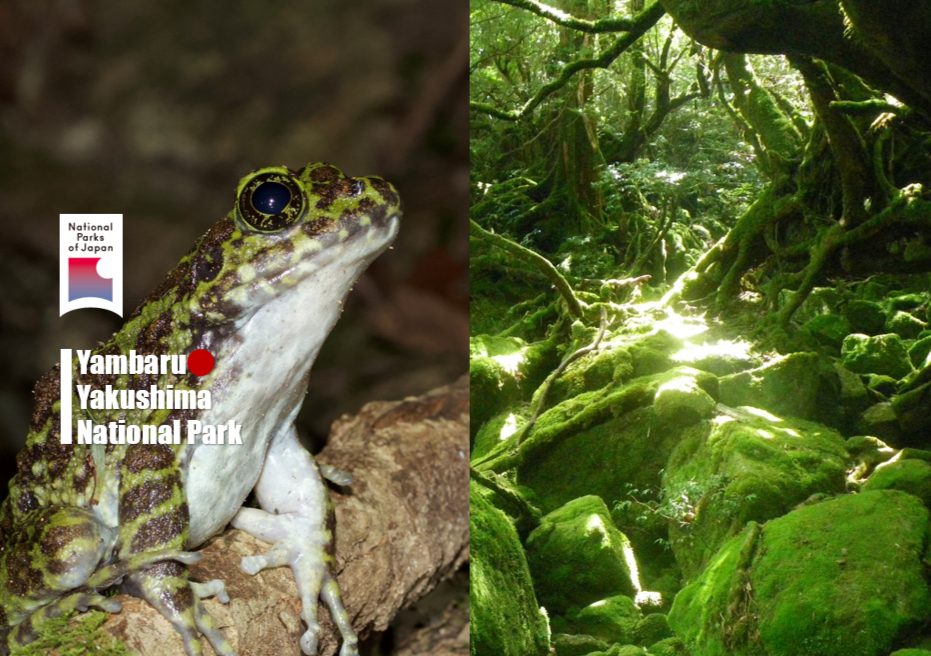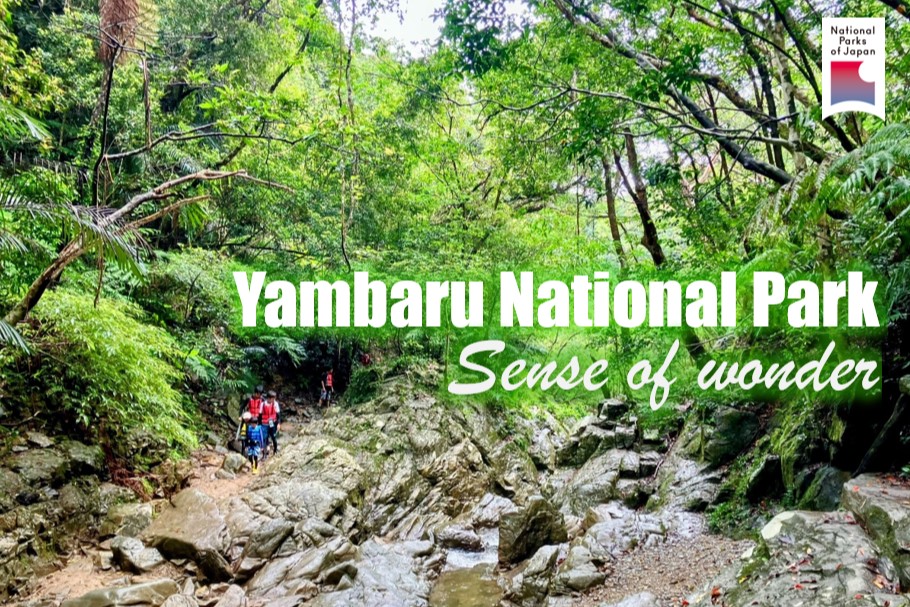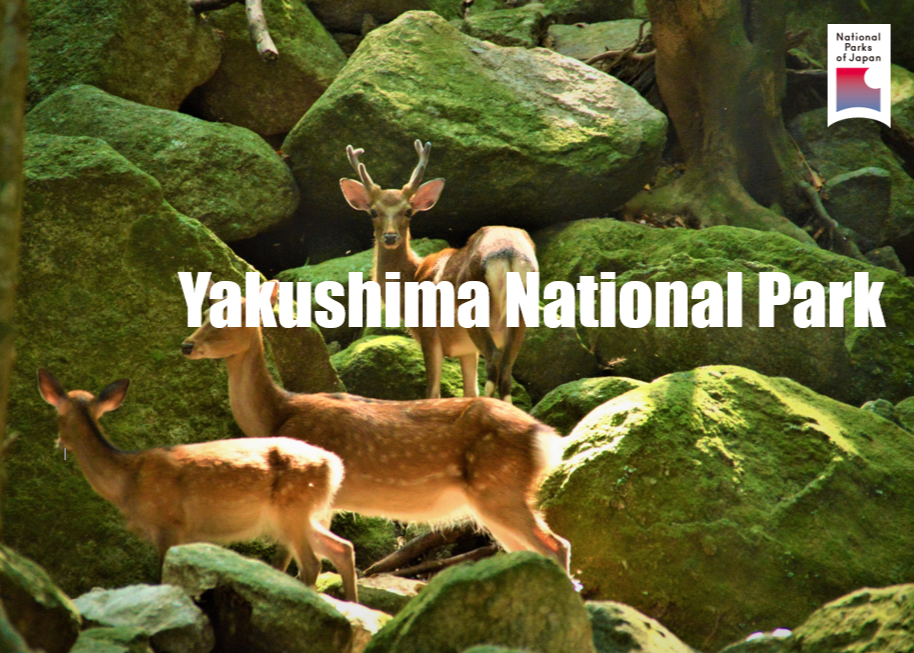Tourism EXPO Japan 2025 Aichi/Central Japan

National Park (Yambaru National Park) / (Yakushima Park)
Okinawa Prefecture's Yambaru Island and Kagoshima Prefecture's Yakushima Island are separated by approximately 400 km, but share much in common in terms of geography, climate, unique ecosystems, and world-class natural heritage values.
Both have wonderful nature, and ecotourism is being promoted in both parks.
Geography and Climate
The lowlands and Yambaru of Yakushima have a subtropical climate, with abundant rainfall throughout the year. This abundant rainfall is the foundation for nurturing rich forests.
Ecosystems and Biodiversity
The area is covered with broad-leaved evergreen forests, mainly evergreen broad-leaved trees such as shii and oak, and both areas are home to a number of endemic species that have evolved in their own unique way. In addition, rare animals that are representative of each area, such as Yakushima's Yakushima sika deer and Yakushima macaque, and Yanbaru's Okinawa rail, Noguchi guerra, and Yanbaru long-armed scarab beetle, can be found in Yanbaru. Especially in Yambaru, rare amphibians, reptiles, and beautiful birds can be seen.
Value as a World Heritage Site
Yakushima Island was registered as a UNESCO World Natural Heritage site in 1993, and Amami Oshima, Tokunoshima, northern Okinawa Island, and Iriomote Island, including the Yambaru region, were registered in 2021. This indicates that the rich ecosystems and biodiversity of these areas are highly valued internationally.
Both have wonderful nature, and ecotourism is being promoted in both parks.
Geography and Climate
The lowlands and Yambaru of Yakushima have a subtropical climate, with abundant rainfall throughout the year. This abundant rainfall is the foundation for nurturing rich forests.
Ecosystems and Biodiversity
The area is covered with broad-leaved evergreen forests, mainly evergreen broad-leaved trees such as shii and oak, and both areas are home to a number of endemic species that have evolved in their own unique way. In addition, rare animals that are representative of each area, such as Yakushima's Yakushima sika deer and Yakushima macaque, and Yanbaru's Okinawa rail, Noguchi guerra, and Yanbaru long-armed scarab beetle, can be found in Yanbaru. Especially in Yambaru, rare amphibians, reptiles, and beautiful birds can be seen.
Value as a World Heritage Site
Yakushima Island was registered as a UNESCO World Natural Heritage site in 1993, and Amami Oshima, Tokunoshima, northern Okinawa Island, and Iriomote Island, including the Yambaru region, were registered in 2021. This indicates that the rich ecosystems and biodiversity of these areas are highly valued internationally.
Co-exhibitor of National Parks of Japan, Ministry of Environment.
Sanriku-Fukko National Park/Towada-Hachimantai National Park :
Amamigunto National Park :
Ashizuri-Uwakai National Park :
Aso-Kuju National Park :
Aso-Kuju National Park / Kirishima-Kinkowan National Park :
Chubusangaku National Park :
Chubusangaku National Park / Fuji-Hakone-Izu National Park :
Eco Tourism Promotion Council :
Eco Tourism Promotion Council<Kamiichi town, Toyama/Gero city, Gifu/Toba city, Mie> :
Ise-Shima National Park :
Kerama Islands National Park/Amami Islands National Park :
Keramashoto National Park :
Kirishima-Kinkowan National Park :
National Park ( Nikko National Park / Oze National Park ) :
National Park (Yambaru National Park) / (Yakushima Park) :
National Park(Daisen-Oki National park)/(San'inkaigan National Park) :
National Park(Joshin'etsukogen/Myoko-Togakushi renzan) :
National Parks (Ise-Shima National Park/Yoshino-Kumano National Park) :
National Parks of Japan (Setonaikai National Park / Ashizuri-Uwakai National Park) :
Setonaikai National Park :
Towada-Hachimantai National Park :
Yakushima (Island) National Park :
Yambaru National Park :
Yoshinokumano National Park :
| Booth No | E-035 |
|---|---|
| Area | Japan |
| Official site | https://www.japan.travel/national-parks/parks/yambaru/ |
| SNS Links |
Photos





